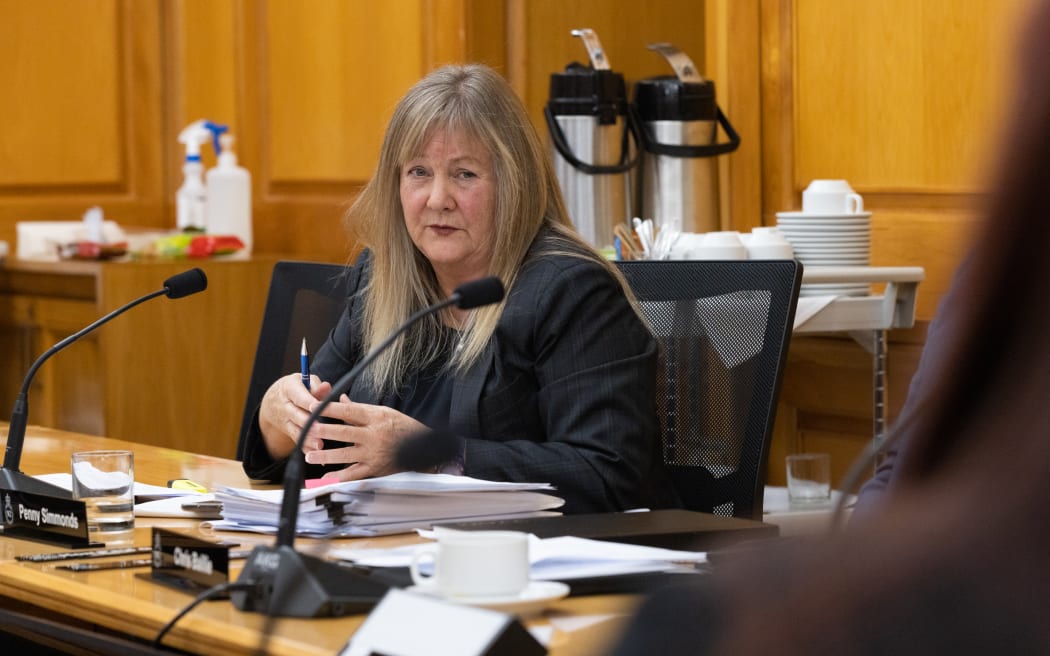
Tertiary Education Minister Penny Simmonds told RNZ she had made a Budget bid for funding to bridge the 2026 projected enrolments. Photo: Phil Smith
The government has been asked to plug a funding gap that would leave the Tertiary Education Commission without enough money to pay for growing enrolments in 2026.
A document released to RNZ under the Official Information Act shows the commission had not been allocated enough funding to cover an expected increase in domestic enrolments in two years.
"The TEC does not currently have sufficient funding to fund all forecast demands from 2026 onwards while recently increased tuition subsidies for degree level and above delivery are only in place for 2024 and 2025. These current cost pressures exist even before considering the expected level of inflation over 2025 and beyond, or to recover some of the gap that has opened between tuition subsidies and inflation since 2020," it said.
Tertiary Education Minister Penny Simmonds told RNZ: "We have placed a bid in the budget process for a cost pressure allocation of funding to bridge the 2026 projected enrolments."
The document, an overview of tertiary sector finances provided following the commission's briefing to the incoming minister in November, also said the government's intention to disestablish Te Pūkenga, which was created to amalgamate polytechnics and work-based learning providers, would cost money especially as polytechnics were unprofitable.
"...in our view, any change to the current structure will require additional funding to ensure the financial sustainability of the network," it wrote.
The document showed foreign students were profitable for universities but much less so for polytechnics.
It said universities made about $11,900 more from each full-time international student than they did from each domestic student while for polytechnics the difference was only $2300.
Universities paid about 6 percent of their student fee income to agents who recruited students while polytechnics paid 13 percent, it said.
For polytechnics, teaching students was a loss-making exercise.
"For Te Pūkenga's provider-based divisions (and previously the ITP subsector), the average sector deficit has been $52 million per annum over the past five years. This was entirely driven by losses incurred from core teaching and research activity, partially offset by positive contributions from non-core activity and non-operational items," it said.
The briefing also repeated the commission's previous advice that the government had an opportunity to significantly reshape the sector.
"The government needs to be clear on the outcomes it wants to achieve through tertiary education, which will influence any decisions around overall funding and the TEC's investment decisions. This includes the extent it may want to utilise incentives or create an environment that encourages greater economies of scale in programme delivery and/or the level of specialisation and differentiation - both within subsectors and across the entire tertiary system. It also includes decisions on key issues such as the degree to which the overall financial sustainability of the sector should be reliant on international fee income," the report said.
The report said students and research capability had suffered since 2019 as tertiary institutions made cuts to cope with lower foreign enrolments, sudden changes in domestic enrolment, and government funding falling behind inflation.
Tertiary Education Union secretary Sandra Grey said the document showed the commission believed the funding model for tertiary education needed to change.
"It's an absolutely clear indication that we need that funding review that the last government was promising," she said.
"We cannot have our education system being turned into a business just so it can survive long-term. We need proper funding, we need adequate funding."
Grey said tertiary institutions should not cut staff numbers in their efforts to ensure they were financially sustainable.
"We have seen major cuts over the last few years and it is harming teaching and learning. There aren't enough courses in some communities, there aren't enough lecturers, there aren't enough technicians to run labs," she said.
Grey said institutions should reconsider spending on buildings that replicated existing facilities and on advertising.





